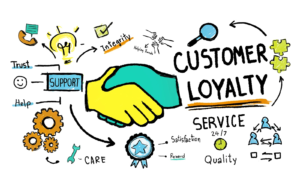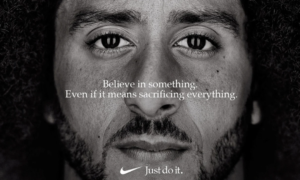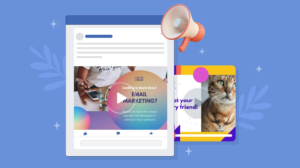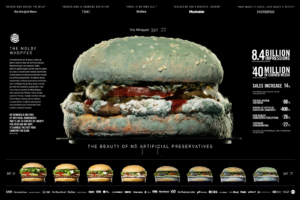Introduction
Storytelling can increase content recall by up to 22 times more than facts alone.” This statistic illustrates a profound truth: humans don’t just consume content they connect with narratives.┬
Storytelling helps brands connect with consumers, engaging their emotions and nurturing deeper connections in an era when attention spans are short. Those who are most effective understand that data informs, but stories inspire.┬
Storytelling is such a cornerstone of modern marketing, examining its psychological roots, strategic benefits, and practical applications. It is important to use storytelling to create an emotional bond between a brand and its customers. Storytelling should be tailored to the audience and should evoke an emotional response. It should also be creative and relevant to the brand.
The Science Behind Storytelling

Why Storytelling Works in Marketing: Examples That Inspire
The Neuroscience of Storytelling
There are multiple parts of the brain that are ignited by stories. Stories stimulate sensory, motor, and emotional areas, unlike pure facts that activate language-processing centers. Because of this, a narrative about a customer’s journey can seem more vivid and relatable than product specs.
Oxytocin and Trust
Engaging with emotionally resonant stories releases oxytocin, also known as “trust hormone.” Audiences feel connected when they engage with emotionally resonant stories. This connection leads to increased empathy and understanding, which can lead to greater collaboration and productivity. Emotionally resonant stories can also help to inspire positive change.
Storytelling to Retain Memory
Compared to isolated facts or numbers, humans remember stories much better. Studies show people remember 70% of a story’s details, compared to just 5% of standalone stats. This is why storytelling can be a powerful tool for communicating complex concepts. Storytelling can also help to encourage empathy and understanding between people.
Persuasion and Emotions
Marketing messages can get through resistance with emotionally engaging stories. The message is more appealing and memorable when it taps into the audience’s fears and desires. Storytelling helps create an emotional connection between the audience and the brand. With the right story, it can create a lasting impact and motivate the audience to take action.
A powerful marketing story has these key elements
Relatable protagonists
Stories that work focus on characters whose experiences or aspirations mirror the audience’s. You might see a skincare brand featuring a relatable character with acne who finds relief from the product.┬

Why Storytelling Works in Marketing: Examples That Inspire
The audience can then identify with the character and the product, forming an emotional connection with the brand. This type of storytelling is effective because it helps to build trust between the brand and the audience.
Challenges to engage the audience
Narratives move forward when there’s conflict. Brands can engage their audience by highlighting a customer pain point whether it’s a technical issue or emotional hurdle. The brand can then provide a solution that resonates with the audience. Narratives can then be built around the solution, building an emotional connection with the customer.
Getting solutions aligned with brand values

Why Storytelling Works in Marketing: Examples That Inspire
A satisfying resolution isn’t just about solving the character’s problem; it’s about connecting the solution to the brand. A travel app that helps a family afford their dream vacation, for example, highlights the value of the product. This connection helps to make a story memorable and can help to create a sense of loyalty towards the brand. It also encourages customers to continue using the product in the future.
Real Stories Build Trust
It’s all about authenticity with audiences. Real stories-like customer testimonials or behind-the-scenes insights-resonate with people more than fake ones. This type of content is seen as more relatable and believable, and it can help to build trust in a brand. Furthermore, it can help to create a deeper connection with the target audience.
The Benefits of Storytelling in Marketing

Why Storytelling Works in Marketing: Examples That Inspire
Creating Brand Loyalty
A brand’s identity and values are reinforced with consistent narratives. You’re more likely to keep customers loyal when they can see themselves in the brand’s story.┬
This helps to create a stronger emotional connection with the audience, which can ultimately lead to increased sales. Additionally, a consistent narrative can help to create a recognizable brand identity that resonates with customers.
Building Emotional Connections
Humanizing brands creates emotional connections that go beyond transactions. Brands that are environmentally conscious might share their impact on wildlife conservation. Companies may also showcase their efforts to reduce carbon emissions or donate a portion of their profits to charity.
 These stories help create an emotional bond between customers and the brand, which can lead to increased customer loyalty.
Retaining Messages
Story-driven campaigns have a better chance of sticking around than ones that focus just on features. Keep your brand top of mind with a narrative.┬
Story-driven campaigns also tend to be more engaging, as they create an emotional bond between the customer and the product. This connection can help to build brand loyalty and customer retention.
Getting More Conversions
The goal of storytelling isn’t just to engage your audience, it’s also to get results. When you hear an emotional story, you’re more likely to make a purchase, sign up for a service, or share it. This is why storytelling is such an important part of any marketing strategy. Companies can use s
How to Tell a Good Story

Why Storytelling Works in Marketing: Examples That Inspire
Make Stories That Fit Your Audience’s Values
You need to understand your audience before you can tell a good story. To foster a genuine connection, align narratives with their values, aspirations, and challenges.
Tell Stories Across Channels
It doesn’t matter what medium you use to tell a story. Build a cohesive narrative across blogs, videos, social media, and podcasts. Make sure your story resonates with your audience and resonates with your brand. Monitor and measure the impact of your story, and adjust as needed.
Personalized Stories Based on Data
Take advantage of customer insights to make tailored stories. Email campaigns can share customer-specific solutions or success stories, for instance. Companies can also use data to create personalized product recommendations. AI-driven chatbots can also provide personalized customer service. Finally, companies can use customer data to create targeted marketing campaigns.
Storytelling With Multimedia
Telling stories is easier with visuals. Share visually compelling narratives on Instagram or video-driven campaigns on YouTube. Use visuals to capture the attention of your audience and drive engagement. Visual storytelling can be used to evoke emotion, evoke action, and create lasting memories.
Examples of Real-life Inspiration
The Nike “Dream Crazy” Campaign

Why Storytelling Works in Marketing: Examples That Inspire
Nike’s aspirational campaign featuring Colin Kaepernick changed the way we tell stories. The brand was aligned with bold, values-driven narratives, inspiring millions to just go for it. The campaign was especially effective because it resonated with people of all backgrounds and ages. It was a powerful example of how companies can use storytelling to create meaningful connections with their customers.
The Coca-Cola “Share a Coke” Campaign

Why Storytelling Works in Marketing: Examples That Inspire
In a simple but emotional campaign, Coca-Cola personalized its products with names. The campaign was a huge success, generating a lot of buzz on social media. The campaign also helped increase sales, as customers were eager to purchase a personalized can.
“Real Beauty” Campaign by Dove
The Dove campaign celebrated diversity and authenticity in beauty while challenging societal norms. The campaign used real women of different shapes and sizes as models and was praised for its message of self-love and body acceptance.┬

Why Storytelling Works in Marketing: Examples That Inspire
It was successful in encouraging more women to embrace their natural beauty and to be proud of who they are.
The Airbnb User Stories
The Airbnb marketing revolves around its users. It highlights the platform’s community-driven ethos by sharing authentic travel experiences.┬

Why Storytelling Works in Marketing: Examples That Inspire
Airbnb’s user stories evoke a sense of wanderlust and create a deeper connection with the target audience. They also help to establish the company’s brand and reputation, and are an effective way of marketing the platform.
Success Stories of Small Businesses
Storytelling helps small businesses stand out. It’s easy to resonate with eco-conscious customers if a local coffee shop shares its journey to sustainability. Sustainability stories can help to build trust with customers.┬

Why Storytelling Works in Marketing: Examples That Inspire
They can also help create an emotional connection between the business and its customers. Storytelling can be a powerful marketing tool for small businesses.
Marketing Tools & Techniques
Storytelling With Video

Why Storytelling Works in Marketing: Examples That Inspire
Making engaging videos is easier than ever with tools like Adobe Premiere and Canva. The power of video storytelling lies in conveying emotions and complex narratives.
Platforms for Data Visualization
Using tools like Tableau or Infogram, you can tell compelling stories using infographics and data visualizations.
Analysis of Social Media
With tools like Hootsuite and Sprout Social, you can track audience engagement with storytelling campaigns.
Using Ai and Ar to Tell Stories
Storylines can be drafted with AI tools like ChatGPT, while AR creates interactive storytelling experiences.
Avoid These Common Mistakes
Narratives That Are Overly Complex

Why Storytelling Works in Marketing: Examples That Inspire
Make sure your stories are simple and focused. It’s better to engage people rather than confuse them with a complicated narrative.
Authenticity
Stories shouldn’t be embellished or fabricated. Trust starts with authenticity.
Neglecting Data-driven Insights
You can’t tell stories that are relevant to your audience if you ignore audience data. Get insights to make sure your content is relevant and resonates.
AI Enhances Marketing Storytelling
With AI, marketing narratives are becoming more personal and scalable. We use advanced algorithms to predict what stories will resonate most with specific audiences based on customer data.┬
Platforms powered by artificial intelligence can create engaging content, automate delivery across channels, and measure campaign success. Furthermore, immersive technologies like AR and VR, powered by AI, create engrossing storytelling experiences. You can use AI to create virtual tours for travel brands, so customers can see where they’re going before booking.
Conclusion
Marketing messages become memorable, emotional connections when they’re told. Brands can create campaigns that inspire and drive results by understanding storytelling, aligning narratives with audience values, and using modern tools.┬
Artificial intelligence’s ability to enhance storytelling opens up limitless possibilities for marketers. Don’t be afraid to start small, experiment with formats, and iterate. A good story isn’t just a way to communicate-it’s the basis of a lasting brand connection.


